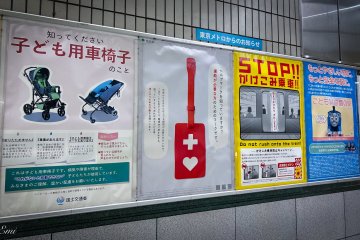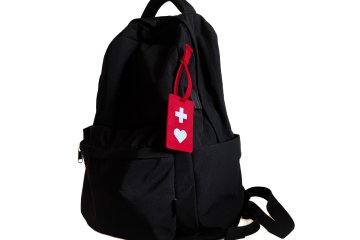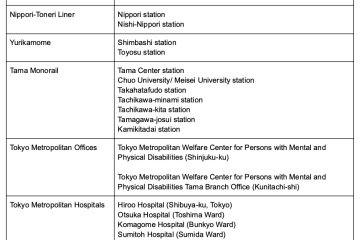Overview
Japan has numerous rules (including unspoken ones) and tons of etiquette to follow. Believe it or not, the majority of Japanese people are quite disciplined and well-informed. They don't pick up their phones, for example, when riding public transportation; they wait in line before entering; and most passengers attempt to avoid taking priority seats for those in need. This relatively new item has finally appeared in the public eye, and the government is making efforts to disseminate the information throughout Japan.

What is the Help Mark?
The Help Mark is a badge worn by persons who may need support, even if they appear to be "normal": those who have prosthetic limbs or joints; those who have internal health issues or serious illnesses; or those in the early stages of pregnancy.
When you board a train, you will notice a sticker on the wall for priority seating. In fact, this mark was established by a Tokyo Metropolitan Assembly member who had an artificial joint in her right leg, and it is said that she invented it so that people in need might get as much support from others as possible by wearing it.

The Tokyo Metropolitan Government designed the symbol of the mark in 2012, and since then, a keychain with a white cross and heart on a red backdrop has been distributed. The Tokyo-oriented emblem was registered by the Japanese Industrial Standards (JIS) in 2017. The purpose of it was to spread awareness among Japanese citizens as well as foreign tourists in preparation for the 2020 Tokyo Olympic and Paralympic Games. Since then, it has gradually been recognized across the country. Approximately 465,000 units had been distributed as of the end of March 2022, according to the government.

Here is a quick video by The Tokyo Metropolitan Government:
The Help Mark tags are attached to their belongings in general. Most people will not ask for your seat, but they may seek your offer silently. When you encounter someone wearing it on a train or bus, please offer them a seat or try to communicate them at least. If they look in trouble, please step forward to lend you a hand.
Where and how to obtain the tag?
The tag requires neither showing a disability ID, known as a 障がい者手帳 (shogaisha techo), nor a disability passbook. According to the Tokyo Metropolitan Government's Bureau of Social Welfare, the Help Mark tag is available at the following locations:

General transportation information, like how to take a train in Tokyo? Take a look at this: https://en.jal.japantravel.com/guide/tokyo-metro-travel-like-a-tokyoite/32040










